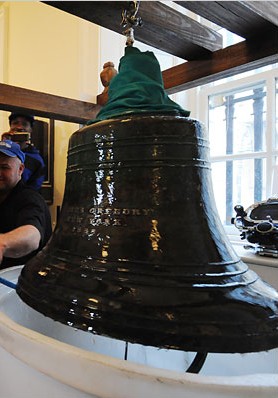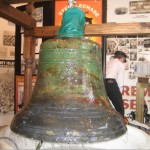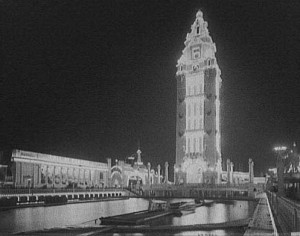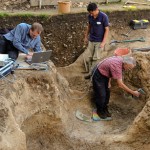 All that’s left is the holes where the huge stones once stood plus a few arrowheads and deer antlers that Stone Age people actually used as pickaxes, but archaeologists think they once held a circle of 25 two-ton Welsh bluestones approximately 33 feet (10 meters) in diameter.
All that’s left is the holes where the huge stones once stood plus a few arrowheads and deer antlers that Stone Age people actually used as pickaxes, but archaeologists think they once held a circle of 25 two-ton Welsh bluestones approximately 33 feet (10 meters) in diameter.
The stones were removed thousands of years ago, possible put to use in the inner circle of Stonehenge itself. The outer henge — a ditch with a bank mounded up facing the outside — around the stone circle dates to 2400 B.C., but the arrowheads found inside the circle are 500 years older than that.
[University of Sheffield Professor Mike] Parker Pearson said his team was waiting for results of radiocarbon dating which could reveal whether stones currently in the inner circle of Stonehenge were originally located at the other riverside construction.
It should also show whether the newly discovered circle’s stones were removed by Neolithic people and dragged along the route of the avenue to Stonehenge, to be incorporated within its major rebuilding about 2500BC. After that date Stonehenge consisted of about 80 Welsh stones and 83 local sarsen stones.
Archaeologists suspected that there may have been something at the end of the avenue between Stonehenge and the Avon river, but they didn’t imagine that it would be a whole new ring of standing stones.
That might suggest that the entire area was a funereal compound for Stone Age Britons. The dead might have been celebrated in the nearby Neolithic village of Durrington Walls where there was a henge and timber circle, then transported to the Avon river for a short river procession that docked at Bluehenge.
Pearson speculates that the bluestone circle was the crematorium where bodies were ceremonially burned before being buried at Stonehenge.
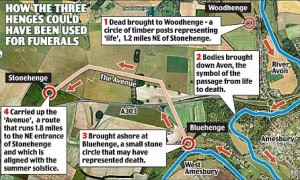
No matter what Bluehenge’s function(s) may have been, its location and very existence dramatically alter the Stonehenge narrative.
Dr Josh Pollard, project co-director from the University of Bristol, described the discovery as “incredible”.
“The newly discovered circle and henge should be considered an integral part of Stonehenge rather than a separate monument and it offers tremendous insight into the history of its famous neighbour. Its landscape location demonstrates once again the importance of the river Avon in Neolithic funerary rites and ceremonies.”
Another team member, Professor Julian Thomas, said the discovery indicated that this stretch of the river Avon was central to the religious lives of the people who built Stonehenge.
“Old theories about Stonehenge that do not explain the evident significance of the river will have to be rethought,” he said.



